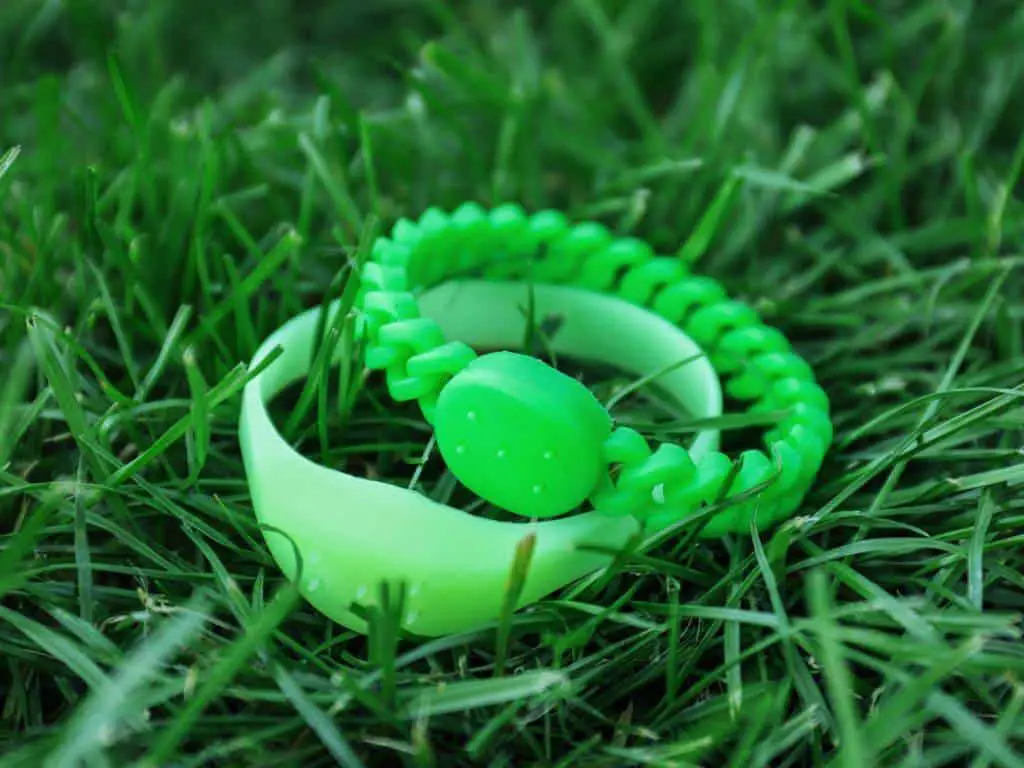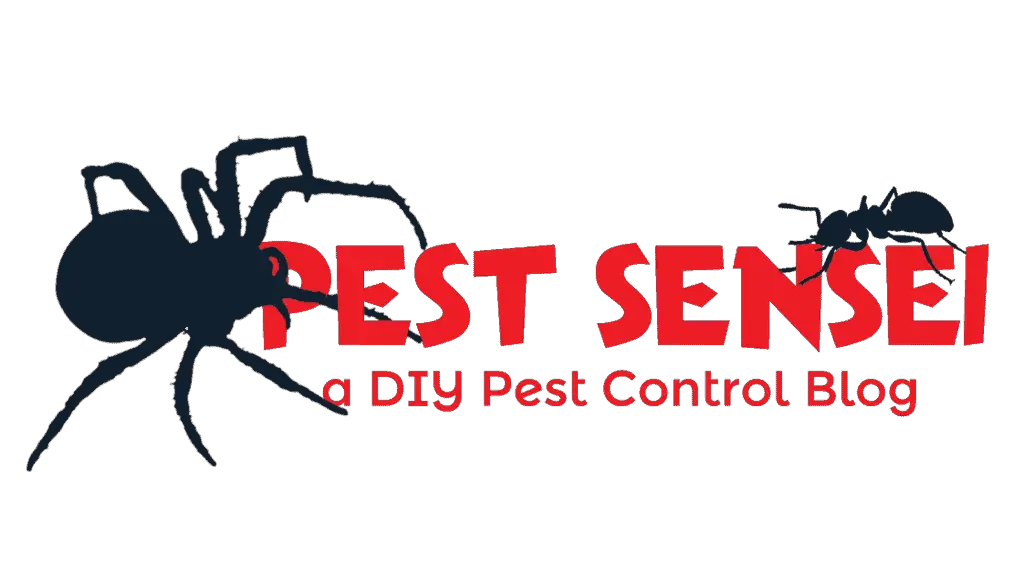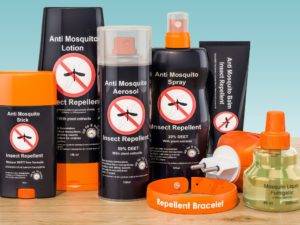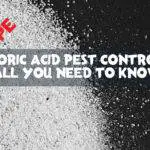Mosquitoes are one of the deadliest vectors in the world. Therefore, it is not surprising to see various mosquito-repelling gadgets created to address mosquito issues. In this guide, I will share with you what works and what doesn’t.
Mosquito Repellents that Work
Skin Repellent

When it comes to mosquito repellents, skin repellents remain the most robust and reliable option available. While they may be considered an older technology compared to the latest advancements and trendy alternatives, their effectiveness should not be underestimated.
High-quality skin repellents contain active ingredients proven to repel mosquitoes, such as DEET, picaridin, oil of eucalyptus or PMD, neem oil, and more. Depending on the concentration and formulation, these repellents can provide long-lasting protection, often up to 12 hours, against mosquitoes.
Check out our comprehensive guide if you’re interested in learning more about different skin repellents and how to choose one.
Mosquito Mat and Liquid Vaporizer

Mosquito mats and liquid vaporizers present innovative solutions to combat mosquito infestations. These formulations effectively repel mosquitoes by releasing repellents into the air. Let’s explore the features and benefits of these products for optimal mosquito control.
Mosquito mats consist of a specially impregnated mat that, when heated, releases the repellent into the surrounding atmosphere. This approach provides hassle-free protection against mosquitoes. To activate the mat, simply heat it according to the device’s instructions.
Similar to mosquito mats, liquid vaporizers offer a reliable defense against mosquitoes. Instead of a mat, a liquid formulation containing the repellent is utilized. When heated, the liquid releases repellent vapors into the air, creating a protective barrier. These devices are commonly incorporated into various products such as anti-mosquito lanterns, patio lights, and torches.
Mosquito mats and liquid vaporizers typically contain either pyrethrin or pyrethroids as active ingredients. Pyrethrins, derived from Chrysanthemum flowers, and pyrethroids, synthetic compounds modeled after pyrethrin’s structure, possess exceptional mosquito-repellent properties. These ingredients swiftly repel and knock down mosquitoes, ensuring efficient protection.
For those seeking an effective mosquito repellent that does not require direct application to the skin, we highly recommend considering either mosquito mats or liquid vaporizers. These products offer a convenient alternative by emanating repellents into the air, providing reliable mosquito control.
Thermacell
Thermacell offers a range of portable mosquito mat and liquid vaporizer models designed specifically for outdoor enthusiasts, making them ideal for activities like hiking and camping.
For ultimate convenience and protection, consider the Thermacell LIV system. This smart system allows you to safeguard your family during outdoor gatherings in your backyard. With the LIV system, you gain the ability to control and monitor mosquito protection directly from your mobile app. Enjoy peace of mind while enjoying the great outdoors.
Mosquito Coil
Mosquito coils, known for their cost-effectiveness and simplicity, are widely available in the market. Typically sold as coiled or stick-shaped products, they serve as a basic and economical option for repelling mosquitoes.
When used in areas without strong wind currents, mosquito coils can effectively ward off mosquitoes. However, it is worth noting that the smoke emitted by the burning coil can leave a lingering odor on clothing and surroundings, which may be unpleasant for some individuals.
I vividly recall my first encounter with mosquito coils during my college years. While working on an outdoor project that required sleeping outside, I found myself plagued by numerous Culex mosquitoes at night, and I can hardly sleep.
In search of a solution, I opted for mosquito coils primarily due to their affordability, as I was on a tight budget at the time. Additionally, the fact that they functioned without requiring a power source was advantageous. To my delight, the mosquito coils worked wonders, providing a bite-free night’s sleep.
However, it is important to consider two significant aspects when using mosquito coils. Firstly, the smoke produced as the coil burns can create a strong odor, affecting both the immediate vicinity and items nearby. Secondly, there is a potential fire hazard associated with their use, and caution should be exercised to prevent accidents.
Similar to mosquito mats and liquid diffusers, mosquito coils often contain active ingredients such as pyrethrins or pyrethroids, which contribute to their repellent properties.
Mosquito Repelling Mesh
Mosquito repelling mesh is another innovation in the market where repellents impregnated onto a mesh are slowly released to repel mosquitoes. Instead of using heat, it relies on air flow to help release and spread the repellent.
Off! Clip On
Among the various mosquito repellent options available, Off! Clip On stands out as a notable choice. This small device features a fan that blows on a refill pack containing metofluthrin, a repellent designed to repel mosquitoes by dispersing it around you.
Off! Clip On is effective when used in stationary positions. However, it’s important to note that some individuals may have concerns about the non-eco-friendly nature of the repellent used in this product.
Field trials have shown that Off! Clip On can reduce biting from the Asian Tiger mosquito, Aedes albopictus, by 70%. However, it may take some time for the released repellent to build up and become effective. Additionally, its coverage area is limited. Like other spatial repellents, Off! Clip On’s efficacy can be influenced by wind, which may disperse the repellent in the air.
While Off! Clip On is likely more effective and scientifically supported compared to many wearable mosquito repellent products in the market, it may not have gained the same level of popularity as anti-mosquito bracelets and patches. This can be attributed to the use of metofluthrin as the active ingredient.
Metofluthrin is a synthetic pyrethroid, a class of chemicals inspired by natural pyrethrins found in chrysanthemum flowers. Although it is a chemical compound, it is considered safe when used in accordance with the label instructions. However, like all pyrethroids, proper handling is crucial to avoid harm to humans and the environment. Remember to carefully read and follow the instructions on the product label for safe usage.
Off! Clip On offers convenient mosquito protection, providing an alternative option for those seeking effective repellency in specific situations.
Mosquito Solutions that Don’t Work
Mosquito Repellent Candles

With numerous mosquito repellent candles flooding the market, it is crucial to be aware that many of them fail to deliver significant repellency due to low concentrations of active ingredients.
Citronella-containing candles are commonly marketed for their supposed mosquito-repelling effects. These candles are designed to release citronellol and citronellal, known mosquito repellents, when burned.
However, the logic behind their effectiveness is flawed. While citronella does possess mosquito-repelling properties, the concentration of the active ingredient in many citronella candles is typically less than 1%. This low concentration renders them ineffective. The same principle applies to candles containing alternative active ingredients intended to repel mosquitoes.
To ensure optimal results when selecting mosquito repellent candles, prioritize those with higher concentrations of the repelling agent. Although there are no specific guidelines regarding minimum concentrations, starting with candles containing at least 5% citronella oil can be a reasonable approach, albeit at your own discretion and risk.
By choosing mosquito repellent candles with higher concentrations of active ingredients, you can enhance the repellency and effectiveness of your mosquito control measures.
Mosquito Plants

The concept of using mosquito plants to naturally repel mosquitoes may seem appealing, particularly for eco-conscious individuals. However, they are too good to be true.
Certain plants, such as those containing citronella oil, lemon eucalyptus oil, and peppermint oil, are known for their mosquito-repellent properties. This has led to the misconception that simply having these plants nearby can effectively repel mosquitoes. Unfortunately, that is not the case.
Mosquito plants work only if you grind the plant and apply it directly to your skin. The active ingredients responsible for repelling mosquitoes are typically found inside the plants. To achieve meaningful and effective repellency, these active ingredients need to be extracted and purified to a high concentration.
While growing mosquito plants in your home or garden can add beauty and fragrance, relying solely on the plants themselves for mosquito protection will likely yield limited results.
Instead, consider utilizing plant-based skin repellents if you want to use something green.
Mosquito Repellent Bracelets and Wristbands

Numerous anti-mosquito bracelets and wristbands flood online marketplaces like Amazon, promising effective mosquito repellency through slow emanation of plant-based repellents into the air.
Unfortunately, these products tend to fall short in delivering significant mosquito repellency. The amount of repellent released is often insufficient, and the coverage area is limited, making their effectiveness questionable.
While it is true that the claimed active ingredients in these products have demonstrated mosquito-repellent properties, the design of the bracelets and wristbands is inherently flawed.
Let’s consider an example: If you were to apply a 5% citronella oil repellent directly to your wrist, would you expect the repellency effect to shield your entire body? If not, it is important to question how an anti-mosquito bracelet could achieve such broad coverage.
Anti-Mosquito Patch
Anti-mosquito patch is another smart idea similar to bracelets and wristbands. But it doesn’t work! Not enough repellent is dispersed to cover your whole body from mosquitoes.
Ultrasonic Devices
It is important to be aware that ultrasonic devices are not effective in repelling mosquitoes. Investing time and money in such products would likely be a waste.
Researchers have been studying the potential of ultrasonic technology for mosquito repellency since as early as 1985, and the findings have consistently demonstrated that it does not work.
To ensure efficient mosquito protection, it is recommended to explore alternative proven methods such as using scientifically tested mosquito repellents, implementing physical barriers, and employing environmental control measures. Relying on ultrasonic devices is not a bad decision.
Landscape Repellent Spray

In the market, you may come across various natural products that claim to repel mosquitoes when sprayed on landscapes. The concept behind these products is to reduce mosquito activity by minimizing their hiding spots within your outdoor area.
While these sprays can have some effectiveness, it is important to note their limitations in terms of cost-effectiveness and efficiency.
Firstly, these products are typically not known for providing long-lasting residual effects. Factors such as exposure to sunlight and rainfall can cause degradation and wash off the spray, necessitating frequent reapplication for sustained effectiveness.
Additionally, achieving comprehensive coverage requires spraying every nook and cranny of your yard, including all trees, shrubs, flowers, and leaves. Considering that mosquitoes can still bypass these greenery areas and land on the walls and fences of your house, the number of areas to spray can be extensive. This becomes particularly expensive when using natural, plant-based products.
It is worth noting that some plant-based repellents used in landscape sprays may also have insecticidal properties, potentially causing harm to other insects upon contact. This may not align with your intentions if you are seeking a purely repellent solution.
Lastly, even with landscape repellent sprays, mosquitoes are not prevented from flying towards you after being initially repelled. This means that while these sprays may discourage mosquitoes from staying in your immediate vicinity, they do not provide a foolproof barrier against mosquito bites.
Considering these factors, it is advisable to assess the cost-effectiveness, practicality, and overall efficacy of landscape repellent sprays before making a decision.
Final Words
The availability of numerous mosquito repellent products in the market is both encouraging and concerning. While some of these products have the potential to become mainstream solutions in the future, it is advisable to rely on established and proven mosquito repellents that have demonstrated their effectiveness consistently. By sticking with what works, you can ensure a reliable and satisfactory solution for protecting yourself against mosquitoes.



